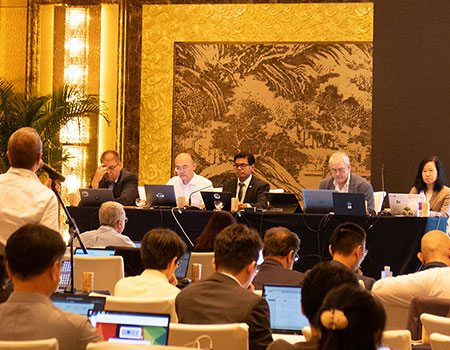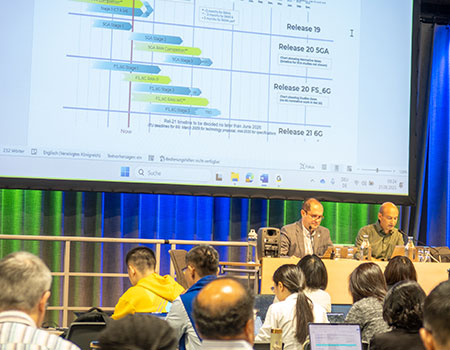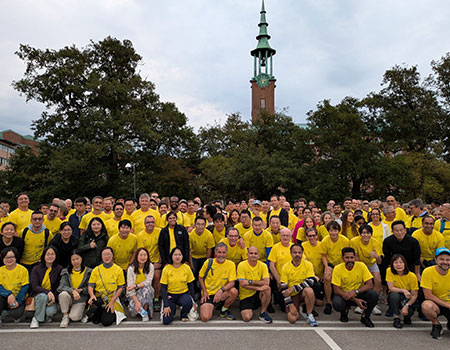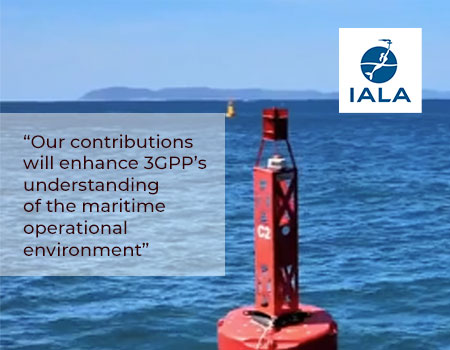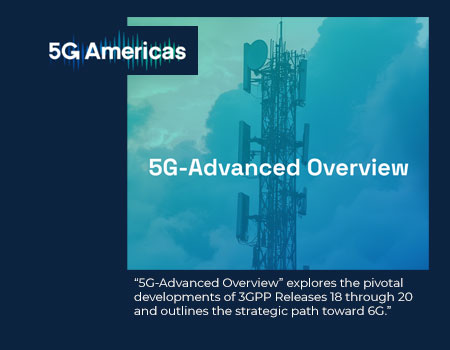5G New Radio – Hard decisions ahead
December 7, 2016
In a new video interview - Dino Flore, 3GPP RAN Chairman, speaks to ETSI's Adrian Scrase about progress on studies for the new radio technology - scheduled for normative work in Release 15. The interview brings some insights in to the hard decisions on exactly what goes in to Release 15, a process that will be in full swing by the March RAN Plenary meeting.
Adrian Scrase (AS): The 3GPP RAN meeting is in full swing and it is impressive to see how full the meeting room is. Given the increase in the size of the population in the meetings, does this pose any additional problems for you as Chairman?
Dino Flore (DF): We continue to grow the number of delegates and, more importantly, the number of companies coming to 3GPP. Not only did we expand in geography, we have also expanded in businesses that we are serving now – the new verticals that we are embracing, expanding our platform to [their needs]. As a result we really have a large number of people in the meetings, of course it gets more tricky and consensus building gets more complicated, but in the end we have our set of procedures as well as best practices which help us move things forward despite the extra challenges we have.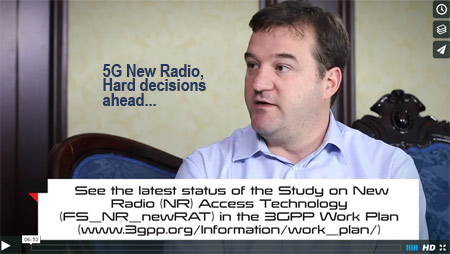 AS: In terms of progress with Release 14, what are the key highlights?
AS: In terms of progress with Release 14, what are the key highlights?
DF: We are about to end Release 14, it will take another 3-6 months to wrap it up. Rel-14 has been a transition Release, but it is quite important. On one hand we have started the 5G study – we have laid the ground work for the 5G specifications. On the other hand, we also introduced some new features, for example Rel-14 is the first release where we have introduced the cellular V2X framework, serving the automotive industry. There are also other interesting verticals that we are expanding to. As I said before we started this trend in the last two or three year’s releases – in which we are expanding to other industries. This (V2X) is one of the most promising ones and with Rel-14 we started to expand that, to put out a first solution for the automotive industry and we are planning more evolution in that area.
AS: As Rel-14 comes to an end and we focus on the next generation (5G), what progress have we made on specifying the new radio, which will be an inherent part of the next generation?
DF: At the moment the studies are on-going, so we are evaluating technologies that will be a part of the new radio (NR). The first phase of the studies will conclude in March – when we will decide what will be in the first release of the [NR] specification, Release 15, with a sub-set of the capabilities.
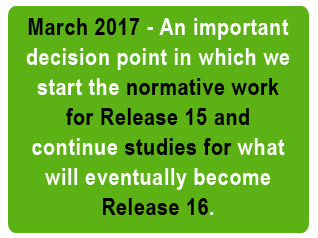 The progress of the studies is quite good, there are quite some challenges. Before we were mentioning the number of people, but also the scope of the work is quite huge, it is challenging in itself.
The progress of the studies is quite good, there are quite some challenges. Before we were mentioning the number of people, but also the scope of the work is quite huge, it is challenging in itself.
We have already made some hard decisions, we will make even more hard decisions as we start to prioritise exactly what goes in to Release 15 versus the next releases. This will happen in March, where we have an important decision point in which we start the normative work for Release 15 and the continuation of the studies for what will then eventually become Release 16. All this discussion will happen in March, but the progress so far is quite good – despite the challenges.
AS: In defining 5G, of interest for many people is in which radio band you would expect this new radio to be first specified, do you have any insight as to where the new radio will be used in the first instance?
DF: Nothing has been defined yet, but as time goes we are getting more clarity also on that. It is quite challenging, because 5G will be deployed on a wide set of bands, from very high frequencies, mid frequencies to low frequencies, so we are looking at a variety of frequencies. For example, we understand that there will be frequencies in the so-called millimetre wave spectrum -28 GHz has been talked about, 39 GHz as well. There will be frequencies in the mid frequencies as well. In Europe I expect the 3.4 – 3.8 GHz spectrum to be important, but also low bands like 700 MHz in Europe or 600 MHz in the U.S. are being talked about – So, there are really a large range of frequencies that we are going to define.
The actual definition bands will come later next year, but expect a variety of them to be part of 5G.
AS: Given this wide variety of bands to consider, how will 3GPP decide where to start?
DF: We will define some priorities, which will be dictated by the early deployments of course and I suspect that we will start by defining a few for the middle wave range…but we will establish early priorities.
AS: based on operator deployment potential…
DF: Yes, early deployments.
AS: Looking to your future, because your mandate as RAN Chairman comes to an end in March, what does the future hold for you?
DF: I will stick around in the broader 3GPP family. As you may be aware, I have been appointed Director General of the 5G Automotive Association (5GAA), a group that will define requirements for the next generation V2X, vehicle to everything, solution. I expect some good interactions with 3GPP coming from this other angle.as well.
Further reading:
- 3gpp News article, June 27, 2016 - 3GPP on track to 5G


 3GPP News
3GPP News